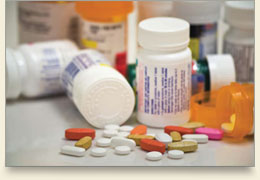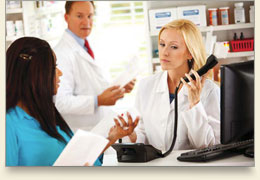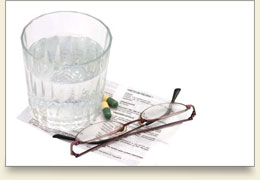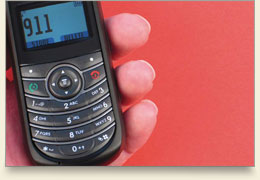Prescription Medications Checklist
Almost everyone takes some form of medication, whether an over-the-counter pharmaceutical such as aspirin to alleviate aches and pains, or a drug prescribed to treat a specific condition or ailment. An estimated 46% of Americans take at least one prescription drug every day.
For most of us, this is no big deal: A doctor prescribes or advises, we pick up the drug at a pharmacy, we glance at the label, we unscrew the cap, we swallow. Yet there is ample evidence that, increasingly, pharmaceuticals on the market can pose serious dangers to consumers.
While accurate statistics are difficult to come by, analysis by the non-profit Institute for Safe Medication Practices indicates that deaths and adverse side effects of both prescription and non-prescription drugs tripled between 1998 and 2005; there were more than 15,000 medication-related deaths reported during that period. This does not come as a surprise: Each year, some of the most popular big-name pharmaceuticals are recalled by the Food and Drug Administration (FDA) because of harmful defects.
What does this mean to you? Perhaps it’s time to take inventory of the medications you and your family take, organize the information you should have about them, and make a checklist of guidelines for safe and effective usage.
Here are critical areas you should address as a consumer of pharmaceutical drugs.
Medication Recordkeeping
- Gather and keep your medical records up to date.
- Make a list of the prescription and non-prescription medicines you are taking, and what they are for.
- Document side effects and/or allergic reactions you have had to medications.
- If you add a drug to your routine, make sure to update your list.

Ask Your Doctor
- Take your list of medications with you to every appointment with your physician.
- Tell your doctor about nutritional supplements, diet changes, or other changes in your life that could affect medication.
- When he or she prescribes or advises a drug, ask questions. What is this? What is it for? How often do I take it? How will it help me? What are the side effects?
- If your doctor has prescribed a brand name pharmaceutical, ask if a generic brand may be substituted safely, and if it will be as effective.
- After you have started taking the medication, call your doctor if you experience any unusual reactions or alarming symptoms.
Ask Your Pharmacist Too
-
- Use the same pharmacy for all prescriptions so they can keep a complete file and check for drug interactions.

- Before you leave the pharmacy, check to make sure you have been given the drug that was prescribed – especially if your doctor has indicated no generic substitution.
- Make sure the pharmacist has given you printed information about dosage, how often to take the medication, possible interaction with foods or other drugs, and side effects to watch for.
- Find out the expiration date of the medicine, and how many times you may refill your prescription.
Follow the Directions
- Read ALL the information you have been given: the label, the packaging, package inserts, and informational sheets provided by the pharmacy.
- Take the precise number of pills or doses at the times prescribed: For example, two pills once a day for seven days.
- Take all of the medication. If the directions say to take for seven days, do not stop after two days because you are feeling better.
- Adhere to the warning label about predictable side effects such as dizziness or drowsiness that would prevent you from driving.
Be Aware of Side Effects
- Known and common side effects will be described in the printed information you receive from the pharmacy.
- Respond appropriately to predictable side effects, such as refraining from driving if you are feeling drowsy.
- Call your physician or pharmacist if you have an unexpected or severe adverse reaction to your medication.
- If you are experiencing a life-threatening adverse reaction, such as breathing difficulties, go to a hospital emergency room or dial 911.
Store and Dispose Safely

- Keep medications in their original containers, with the original labels, but pull out and throw away the cotton plug.
- Know which medications should be refrigerated, and which should be kept out of sunlight or heat and humidity.
- Store all medications out of the reach of children; if there are small children in your home, put safety locks on cupboards and drawers.
- Discard expired medications, but do not flush them down the toilet or drain – they may get into your water supply. Most medications can be included in household trash, but should be removed from containers and mixed with other garbage.
Medications on the Road
- Carry your medications and backup prescriptions with you, along with a list of what they are and the prescription numbers. Also list contact information for your doctors and the pharmacy you use at home.
- If you are flying, Transportation Security Administration guidelines permit you to bring all prescription and over-the-counter medications.
- However, if any of these exceed 3 ounces, you must tell the security officer at the checkpoint and submit to further screening.
In Case of Emergency
- Do not mix medications in the same container, and make sure you know what each of your medicines looks like. Then, if you should have an adverse reaction, you will be able to identify the source.
- Keep in a handy place the phone numbers for your local emergency medical service and poison control centers.
- If you or anyone in your household – especially a child – should ingest a potentially poisonous medication, call 911 immediately. If someone is experiencing an adverse reaction that does not appear life-threatening, call your physician, or go to the closest emergency room or urgent care center.

Use the following checklists and form to help you organize, gather information, and safely use your prescription and non-prescription medications.
MY PRESCRIPTION/MEDICATIONS CHECKLIST
___ Make a list of all your medications, whether prescribed by your doctor or over-the-counter drugs you take regularly. (See “My List of Prescriptions and Non-Prescription Medications” form.)
___ Write down any medication side effects you have experienced in the past.
___ Take these lists to your doctor and make sure they become part of your permanent medical record.
___ Once a year, bring all your medicines to your doctor’s appointment so records can be updated and your doctor can recommend changes, if necessary.
Questions for My Doctor
___ What is the brand name – and generic names, if any – for the drug you are prescribing?
___ What does it look like? (Pill or liquid? Color? Size? Shape?)
___ Why am I taking this? What is the desirable outcome? When will I feel better?
___ How much should I take (the dosage), how often, for how long?
___ What are the common side effects that I should watch for?
___ Are there serious side effects that could be dangerous?
___ Do I take this with food or without food?
___ Are there specific foods or liquids I should avoid?
___ What should I do if I miss a dose?
___ Is this medication addictive? If so, how can I avoid addiction?
Using Medications Safely
___ Keep medicines in original containers so you can recheck label directions in case you forget.
___ Read any instructions on the packaging, and keep it for future reference.
___ Read the package insert (PI) that came with your medicine. For prescription drugs, the FDA requires that manufacturers provide this information in the PI:
- Drug description: Includes generic name and brand name; dosage form; pharmacological or therapeutic class; chemical name and structural formula; other important chemical or physical information.
- Clinical pharmacology: How this drug will work in your body.
- Indications and usage: Diagnoses for which the drug is FDA approved.
- Contraindications: Situations in which this drug should not be used.
- Warnings: Adverse reactions and potential safety hazards, what to do if they occur. The FDA requires a prominently-displayed “black box” warning of especially serious potential problems.
- Precautions: Situations such as pregnancy in which special care should be taken; how to handle common side effects safely.
- Adverse reactions: Undesirable side effects that could occur with this or similar drugs.
- Drug abuse and dependence: Potential for abuse and addiction.
- Overdosage: Signs and symptoms of overdose, complications that have been found to occur.
- Dosage and administration: Usual recommended dosage, timing, duration, limits, etc.
- How supplied: Strength of dosage forms, identifying information, storage and special handling guidelines.
___ Store your medications where they cannot be accessed by children or pets, and at temperatures recommended in the PI. Most medications should be stored in a cool, dry place.
___ Take all of the medication: As many dosages, as many times, for as many days as prescribed. Do not be tempted to stop just because you are feeling better.
___ Dispose expired or unused drugs safely. Do not flush them down the toilet or pour them down the drain.
___ If your community has a drug take-back program or hazardous waste collection site, this is the ideal way for disposal.
___ With many medicines, however, it is safe to take them out of the original container, mix them with garbage such as coffee grounds or kitty litter, and throw them into the household trash. Check the FDA website (www.fda.gov) to make sure.
My Travel Prescription Checklist
___ Plan ahead. Refill prescriptions to make sure you won’t run out.
___ Get a copy of your prescription so you can refill it on the road if necessary.
___ Carry a list of all your medications, their prescription numbers, and contact information for your physicians and hometown pharmacy.
___ Pack all medications carefully in carry-on luggage.
___ For medicine that requires refrigeration, pack in a cooler with ice for a short trip. For longer trips, consider replacing a liquid drug with a powder form to which you can add water when you arrive.
___ If you are flying and your medical supplies exceed the 3 ounce carry-on limit, tell the checkpoint security agent and you will be subjected to additional screening.
___ Write out your regular medication schedule, so that if you are traveling to a different time zone, you can adjust your medication schedule accurately.
___ Check with your physician or pharmacist again to confirm foods or liquids that may interfere with certain drugs, in case you are faced with unfamiliar menus in foreign countries.
___ Avoid drinking alcohol, which can interfere with many prescription and non-prescription medicines and could cause dehydration on flights in high altitudes.
MY LIST OF PRESCRIPTIONS AND NON-PRESCRIPTION MEDICATIONS
Complete this form, keep it up to date, and take it with you when you see your doctor or go to the hospital.
Current as of (date)__________
Brand Name Generic Name Dosage For Prescribed By
_______________________________________________________________________________
_______________________________________________________________________________
_______________________________________________________________________________
_______________________________________________________________________________
_______________________________________________________________________________
_______________________________________________________________________________
_______________________________________________________________________________
_______________________________________________________________________________


